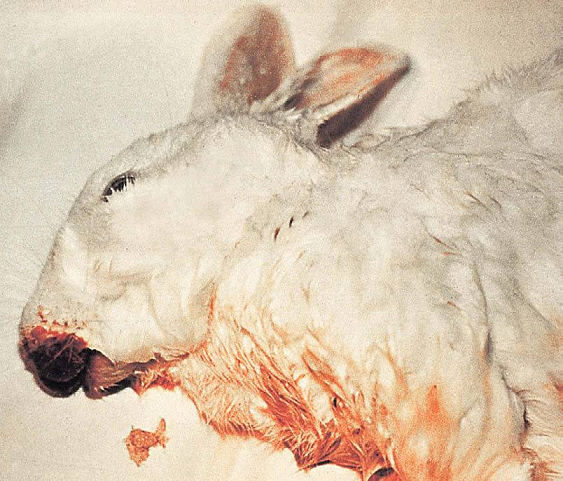Difference between revisions of "Rabbit Medicine and Surgery: Self-Assessment Color Review, Second Edition, Q&A 13"
Jump to navigation
Jump to search
(No difference)
| |
Latest revision as of 09:28, 26 November 2018
| This question was provided by CRC Press. See more case-based flashcards |

|
Student tip: This case is an intriguing situation that might be seen in practice. |
This unvaccinated outdoor rabbit was found dead one morning (see image). Blood was evident around the face. The rabbit had no previous signs of illness.
| Question | Answer | Article | |
| What are the possible causes of death in this animal? | Differential diagnoses for sudden death with haemorrhage include: • viral haemorrhagic disease (VHD) – sudden death with bleeding from the nose and mouth is a characteristic sign of this calicivirus infection. • trauma – from a predator, or self-trauma to head (e.g. from being startled). • anticoagulant rodenticide poisoning (e.g. warfarin).
|
Link to Article | |
| What postmortem findings would confirm your diagnosis? | Postmortem findings with VHD are of a necrotizing hepatitis and splenitis. The liver is pale, enlarged and friable and has a lobular pattern. Lung haemorrhage and a frothy, bloody exudate are found in the trachea, nasal passages and mouth. Widespread disseminated intravascular coagulation (DIC) causes fibrinous thrombi and haemorrhage in most organs, especially the lungs, heart and kidneys. Histopathologically, acute hepatic necrosis, acute nephropathy and the DIC and haemorrhage are confirmed. Diagnosis can be confirmed by haemagglutination and enzyme-linked immunosorbent assay (ELISA) tests and detection of the calicivirus by electron microscopy. Trauma would be apparent on postmortem examination of the carcass, and there would be an absence of signs of other disease. Bruising or wounds would be visible.
Rodenticide poisoning is a less likely cause of death. Anticoagulants such as warfarin, coumachlor and indandione derivatives interfere with prothrombin production in the liver and cause multiple haemorrhages throughout the musculature, especially over bony prominences, and internal haemorrhages including epistaxis. External haematomas may also be present. |
Link to Article | |
To purchase the full text with your 20% off discount code, go to the CRC Press Veterinary website and use code VET18.
